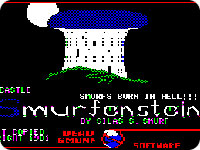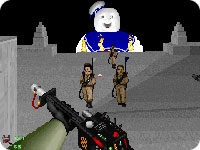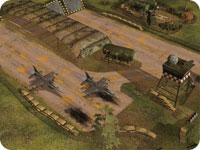A Brief History of Mods
As long as games have existed, players have wanted to change the rules. Even Dungeons & Dragons was, in a way, a mod: Gary Gygax and co-creator Dave Arneson enjoyed playing war games, in which players controlled large armies, and they decided to create a variant in which the player controlled a specific character. Soon they hit upon the idea of giving that character a persona the player could inhabit, and the role-playing genre was born.
In the world of video games, the earliest mod was created by MIT students Doug Macrae and Kevin Curran, who turned the arcade game Missile Command into Super Missile Attack. They embarked on the project because Macrae owned three Missile Command machines stationed around campus and found they were making less and less money — a declining level of interest, coupled with customers who could play for extended periods on a single quarter, was responsible for the situation. Super Missile Attack, which featured new enemies and a faster pace of gameplay, soon became successful.
Macrae and Curran then turned their sights on Pac-Man, which was one of the most popular arcade games of the early 1980s. They originally created a mod called Crazy Otto before working with Bally-Midway to develop Ms. Pac-Man. Crazy Otto, which starred a Pac-Man with legs, was scrapped.
Modding Comes Of Age
In the world of computer games, the earliest known mod was “Castle Smurfenstein,” which turned Muse Software’s Castle Wolfenstein (not to be confused with id Software’s Wolfenstein 3D) into a game starring Smurfbutcher Bob. In the early 1990s, the floodgates really opened when id Software released its seminal first-person shooter Doom, encouraging the fan community to create their own levels. The result was thousands of mods that featured everything from the movie “Ghostbusters” to “The Simpsons.”
However, creators of mods for Doom, Doom II, and id Software’s Quake had to develop their own tools for use in their projects, or purchase expensive computers if they wanted to try the editors that id made available. That changed when Epic Games bundled an editor with their popular first-person shooter, Unreal. Now fans could use one modding tool, rather than several, and quickly and easily see the results when they were done.
Many members of the Unreal development team were recruited from the ranks of Doom and Quake modders, a trend that continues to this day. Some mods, such as the Half-Life one known as Counter-Strike, have become so popular that they’ve been purchased by the publishers of the original games .
The Future of Modding
“I imagine that many people who make mods do so because they want to make games,” notes Jason Harris, the site administrator for Macologist and one of the people on the True Combat: Elite development team. The game is a mod for Wolfenstein: Enemy Territory, a free sequel to Return to Castle Wolfenstein that focuses on multiplayer mayhem. While Enemy Territory is set during World War II, True Combat happens during the present day.
Harris adds: “Others simply want to have fun and share their work with the online community. Either way, everyone benefits from mods because they add longevity to a game.”
He expects modding to become more accessible in the future, thanks to publishers’ efforts to make the process easier. “Map editors are getting better all the time and take out more and more of the hard work that we’re currently used to,” Harris explains. “I suspect we’ll start seeing some kind of easy-to-use app that will make it simpler to create your basic models, whether they be guns, creatures, or buildings.”



